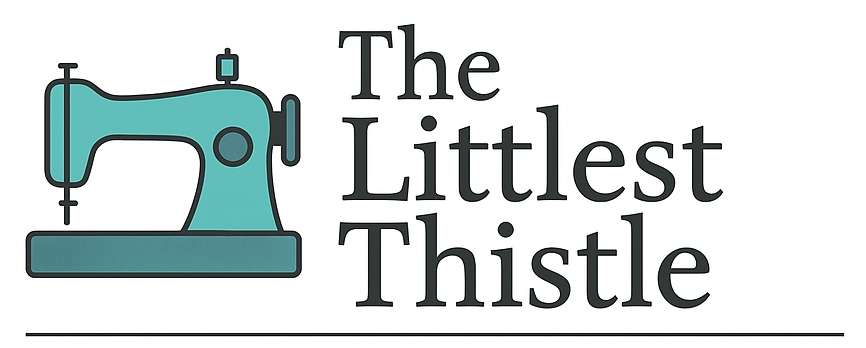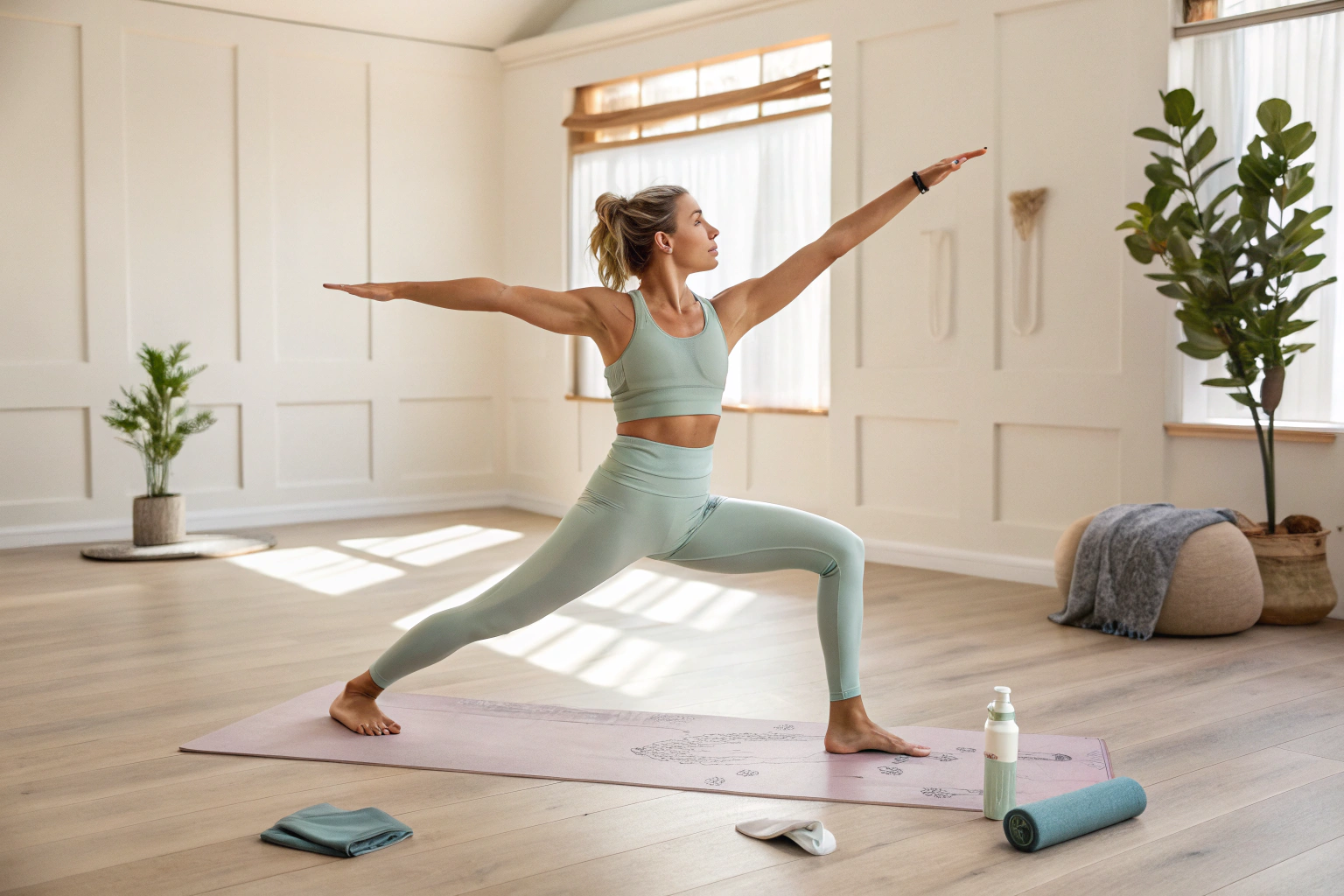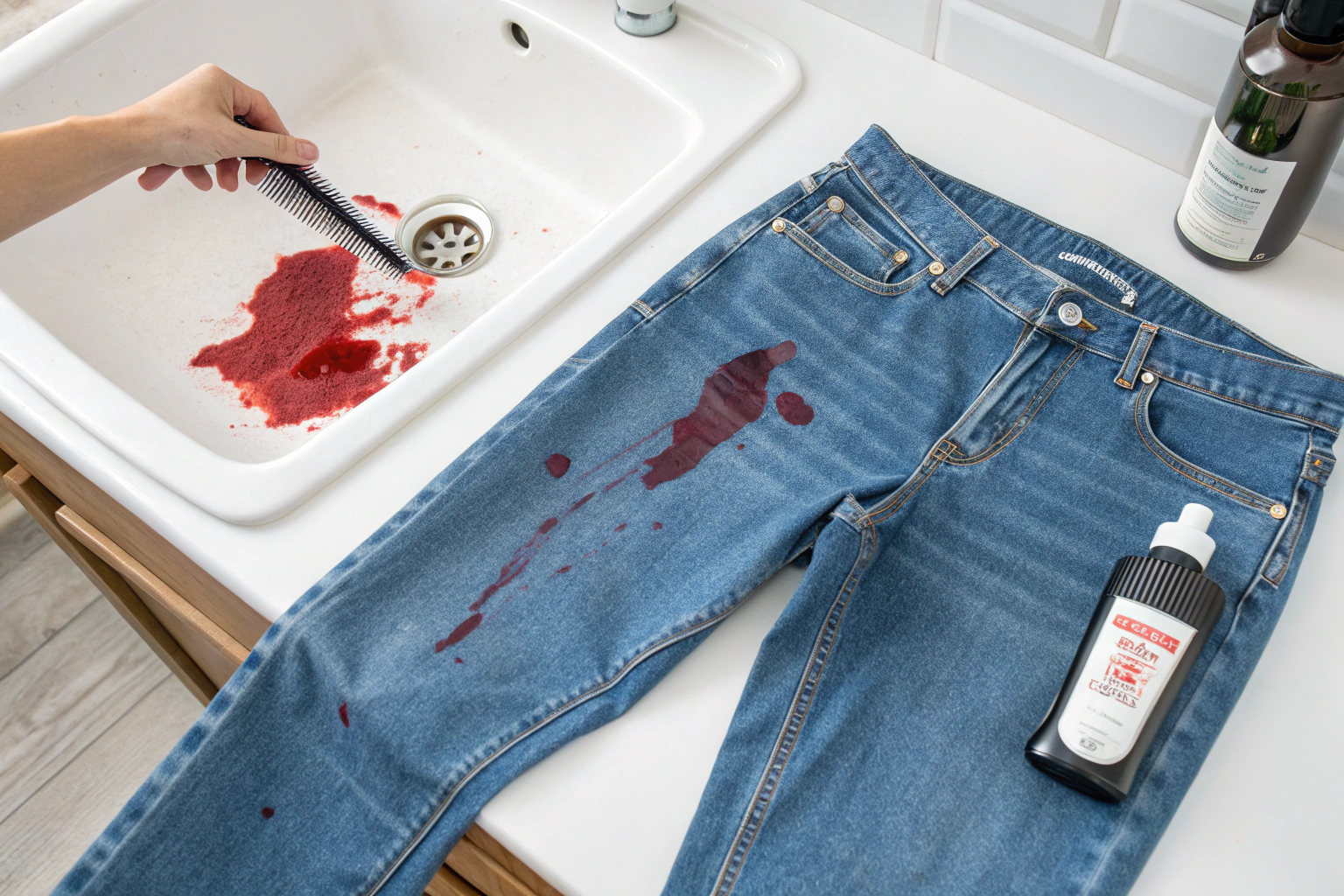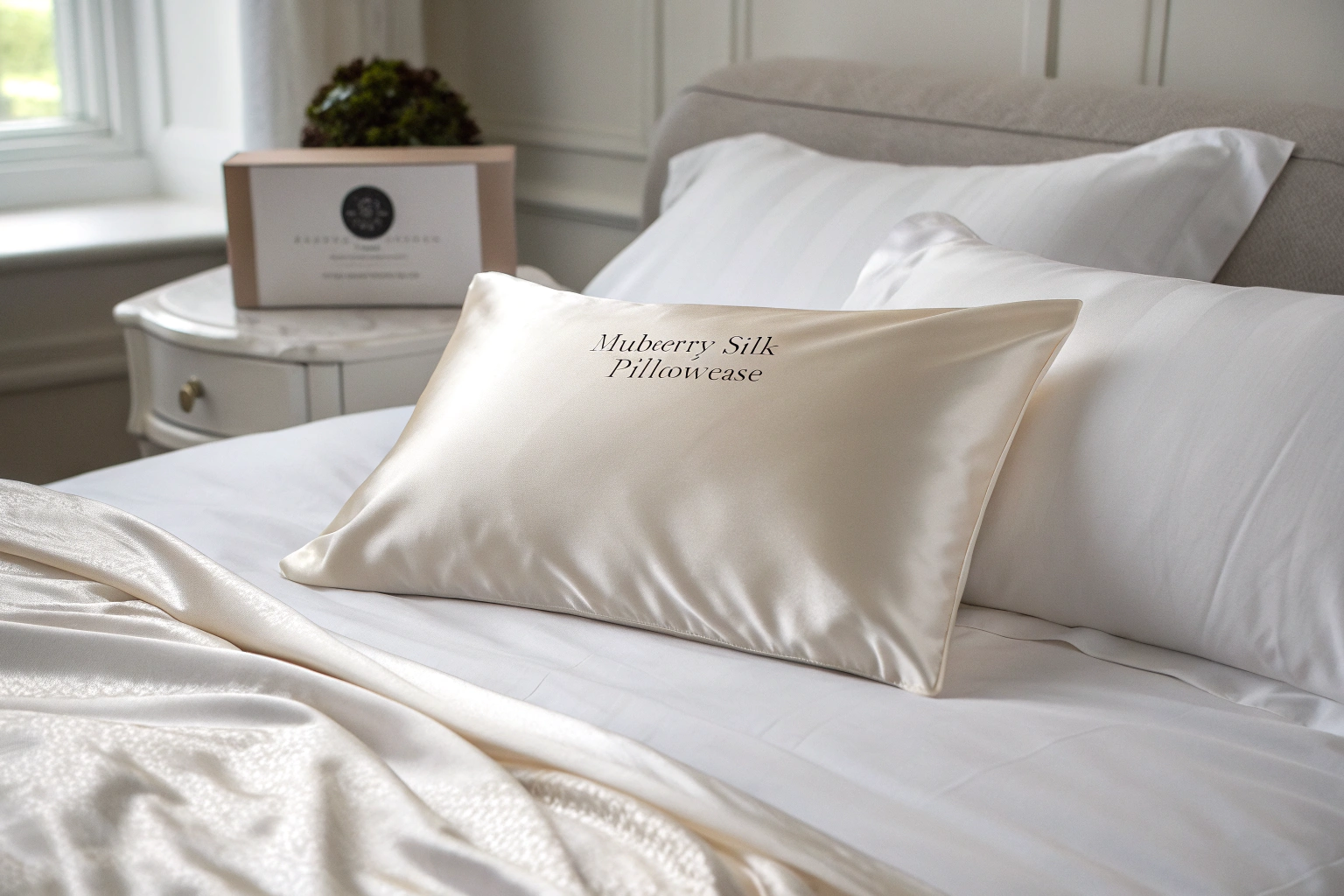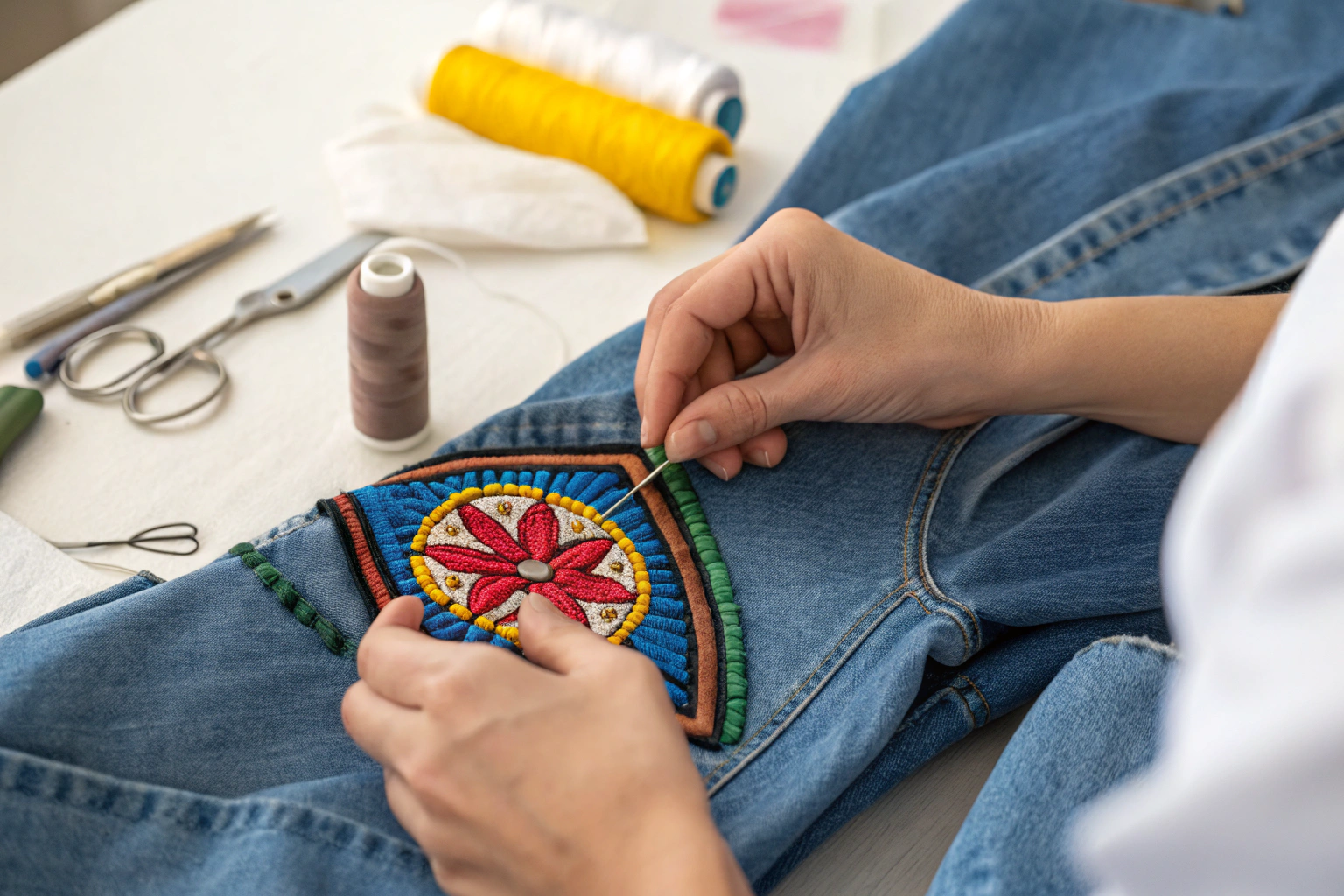What to Wear to Yoga Class: A Practical Guide from a Seasoned Instructor
After teaching yoga for over a decade, I’ve witnessed firsthand how the right yoga class attire can transform a student’s practice. The wrong clothing choices create unnecessary distractions – from constantly adjusting ill-fitting tops during downward dog to feeling self-conscious about transparency during forward folds. As both a yoga instructor and dedicated practitioner, I’ve learned that thoughtful yoga clothing choices aren’t about fashion; they’re about creating the optimal conditions for your body and mind to move freely. When your yoga practice flows without wardrobe malfunctions or comfort issues, you can focus entirely on breath, alignment, and the meditative aspects that make yoga so transformative. This comprehensive guide draws from years of personal experience and observations from teaching hundreds of students across various yoga styles.
Key Takeaways
- Yoga clothing should prioritize comfort, flexibility, and breathability above all else
- Moisture-wicking fabrics significantly outperform cotton for active yoga practices
- Proper fit allows unrestricted movement while providing adequate coverage during inversions
- Strategic layering is essential for temperature regulation before, during, and after practice
You may also be interested in the article 15 minute meals kid-friendly.
Understanding Yoga Clothing Essentials
Yoga apparel differs fundamentally from regular athletic wear due to the unique demands of yoga practice. While running clothes prioritize forward motion and gym wear focuses on lifting movements, yoga clothing must accommodate 360-degree flexibility, inversions, and extended floor work. Through years of teaching beginners who arrived in everything from baggy cotton t-shirts to restrictive jeans, I’ve identified three non-negotiable attributes that separate functional yoga wear from problematic choices.
First, breathability becomes crucial as your practice intensifies and your body temperature rises. Second, flexibility ensures your clothing moves with your body rather than restricting your range of motion. Finally, comfort eliminates physical and mental distractions that can pull you out of the meditative flow state that makes yoga so beneficial. My own yoga wardrobe has evolved dramatically since my early teaching days, and I now prioritize these fundamental qualities over trendy styles or brand names.
- Breathability: Allows air circulation and prevents overheating during active sequences
- Flexibility: Provides unrestricted movement through all planes of motion
- Comfort: Eliminates distractions from seams, tags, or poor fit
What Should I Wear For Yoga: Fabric Considerations
The fabric composition of your yoga clothing materials directly impacts your comfort and performance throughout practice. After testing countless garments through hot yoga sessions, gentle restorative classes, and everything in between, I’ve developed strong preferences based on how different materials respond to movement and moisture.
Cotton, while natural and breathable when dry, becomes heavy and clingy when wet with perspiration. I’ve watched students struggle through heated classes in cotton tops that became increasingly uncomfortable as practice progressed. Moisture-wicking fabrics, typically synthetic blends containing polyester, nylon, or specialized fibers, actively pull sweat away from your skin and allow it to evaporate quickly.
My personal favorite combinations include nylon-spandex blends for their exceptional stretch and recovery, and bamboo-derived fabrics for their natural antimicrobial properties and silk-like feel. Stretchable material containing 15-20% elastane or spandex provides the flexibility needed for challenging poses while maintaining shape after repeated washing. Avoid fabrics with excessive synthetic content that don’t breathe well, as they can trap heat and create an uncomfortable microenvironment against your skin.
| Fabric Type | Moisture Management | Flexibility | Best For |
|---|---|---|---|
| Cotton | Poor | Limited | Gentle/Restorative styles |
| Nylon-Spandex Blends | Excellent | Superior | All yoga styles |
| Polyester Blends | Good | Good | Active/Hot yoga |
Essential Yoga Clothing Items
Building a functional yoga wardrobe doesn’t require an extensive collection, but rather thoughtful selection of versatile pieces that work across different practice styles and environments. My recommendations have evolved after observing what consistently works best for hundreds of students and through my own trial and error over years of daily practice. The following categories represent the foundation of any practical yoga wardrobe, with each serving specific functions that enhance your practice experience.
Best Clothes For Yoga: Tops and Sports Bras
Upper body garments face unique challenges in yoga practice, from maintaining coverage during inversions to providing adequate support during dynamic movements. I’ve seen students constantly adjusting loose-fitting shirts during forward folds or feeling self-conscious about gaping necklines in downward dog. The ideal yoga tops strike a balance between supportive fit and freedom of movement.
For women, a well-fitted sports bra serves as the foundation of your upper body support system. Look for styles with racerback designs that won’t slip off shoulders during arm balances, and ensure the band provides adequate support without creating pressure points during backbends. Built-in shelf bras in tank tops work well for lighter support needs, but dedicated sports bras offer superior support for more vigorous practices.
Tank tops remain my preferred choice for most yoga styles, as they provide excellent range of motion while maintaining appropriate coverage. The key lies in finding tops with strategic seam placement that won’t create pressure points when lying on your back or stomach. Avoid tops with decorative elements across the back or excessive gathering that can become uncomfortable during floor work.
Fitted t-shirts can work well for cooler environments or more modest coverage preferences, but ensure they’re long enough to stay tucked and made from breathable fabric that won’t become clingy when damp. I personally rotate between several well-fitted tank tops and keep a lightweight long-sleeve layer available for temperature regulation.
- Appropriate coverage: Stays in place during inversions and forward folds
- Stay-put design: Doesn’t require constant adjustment during practice
- Strategic seam placement: Comfortable when lying on back or stomach
- Moisture-wicking fabric: Maintains comfort as body temperature rises
Bottoms: Leggings, Pants and Shorts
Lower body clothing selection significantly impacts your practice comfort and confidence. After years of teaching and personal practice, I’ve learned that the perfect yoga pants or leggings should feel like a second skin – present enough to provide coverage and support, but forgotten once you begin moving. The wrong bottoms can create constant distractions through slipping waistbands, transparency issues, or restricted movement.
High-waisted leggings have become my personal standard and what I recommend to most students. The extended waistband provides core support, stays in place during inversions, and eliminates the gap that can occur between top and bottom during backbends. Look for leggings with compression that hugs your body without restricting circulation or creating uncomfortable binding points.
Yoga shorts work beautifully for hot yoga or when you prefer less coverage, but ensure they’re long enough to prevent chafing and made from substantial fabric that won’t ride up during movement. I’ve observed that shorts with built-in compression shorts underneath perform better than single-layer designs for active practices.
Traditional loose-fitted pants can work well for gentler practices, but choose styles that taper at the ankle to prevent fabric from getting caught under hands or feet during standing poses. The key with any bottom style is ensuring the waistband stays put – nothing disrupts practice flow like constantly hitching up slipping pants.
Quality indicators I look for include reinforced seams, substantial fabric weight that provides opacity, and waistbands that maintain their elasticity after repeated washing. Test the squat test before purchasing – if you can see through the fabric when stretched, it’s not suitable for yoga practice.
- Transparency issues: Choose opaque fabrics that don’t become see-through when stretched
- Slipping waistbands: Avoid low-rise or poorly constructed waistbands that require constant adjustment
- Binding seams: Ensure seam placement doesn’t create pressure points during seated poses
- Length issues: Pants should clear the floor; shorts should prevent chafing
Layering Pieces and Accessories
Effective layering transforms your yoga experience by accommodating temperature fluctuations throughout practice. Most yoga sessions begin in a cool studio and gradually warm up, requiring strategic removal of layers as your body temperature rises. I’ve developed a personal layering system that works consistently across different seasons and studio environments.
A lightweight yoga jacket or cardigan serves as the perfect outer layer for arrival and departure. Look for designs that won’t restrict shoulder movement if you choose to keep them on during warm-up sequences. Zip-front styles offer easy removal without disrupting hair or disrupting your practice flow.
Yoga accessories like headbands help manage hair and absorb perspiration without the bulk of traditional sweatbands. I keep several in my practice bag for longer sessions or particularly warm classes. Yoga socks with grips can provide additional traction on smooth surfaces, though I personally prefer practicing barefoot when possible for better ground connection.
A personal yoga towel becomes essential for hot yoga or any practice where you expect significant perspiration. Choose towels specifically designed for yoga with non-slip backing that stays in place on your mat. Regular towels tend to bunch up and create unstable surfaces during practice.
- Arrive: Light jacket or sweater over practice clothes
- Warm-up: Remove outer layer, keep light top layer if needed
- Active practice: Remove all unnecessary layers
- Cool-down: Add back light layer as body temperature drops
- Departure: Full layering system for transition back to outside temperature
Breathable Underwear Considerations
The foundation layer of your yoga attire deserves careful consideration, though it’s often overlooked by practitioners focused on outer garments. Inappropriate undergarments can create significant discomfort during practice, from binding during twists to moisture retention during heated sessions. My professional advice emphasizes selecting breathable undergarments that work harmoniously with your outer layers.
Moisture-wicking underwear made from synthetic blends or merino wool outperforms cotton significantly during active practices. Cotton retains moisture and can become uncomfortable as your practice progresses, while technical fabrics actively move moisture away from skin and dry quickly. Seamless or flat-seam construction prevents chafing during extended floor work or seated poses.
For women, sports bras designed specifically for yoga often eliminate the need for additional undergarments while providing appropriate support and coverage. Men should consider compression shorts or boxer briefs that provide support without excess fabric that can bunch or shift during movement.
I personally prefer minimal, well-fitted undergarments that disappear during practice. The goal is complete comfort that allows you to focus entirely on breath and movement without any awareness of your foundation layer. Invest in quality pieces that maintain their shape and performance properties after repeated washing.
- ✓ Moisture-wicking synthetic or merino wool fabrics
- ✓ Seamless or flat-seam construction
- ✓ Appropriate support without excess compression
- ✓ Quick-drying properties for back-to-back classes
- ✓ Maintains shape after repeated washing
Dressing for Different Yoga Styles
My experience teaching multiple yoga styles has revealed how clothing needs vary significantly based on the specific demands of each practice. What works perfectly for a gentle Hatha class may be entirely inappropriate for a heated Vinyasa session, and understanding these differences helps you make informed choices about your specialized yoga wear.
Hot yoga and Bikram practices demand minimal, moisture-wicking yoga-specific clothing that can handle extreme perspiration. I recommend fitted shorts and sports bras for women, and shorts for men, all made from fabrics that maintain their integrity when saturated with sweat. Loose clothing becomes problematic in heated environments as it retains moisture and restricts heat dissipation.
Vinyasa and Power yoga styles require clothing that moves seamlessly through dynamic sequences. I prefer fitted but flexible garments that won’t shift during jump-backs or arm balances. The constant movement generates internal heat, so breathable fabrics become essential even in unheated studios.
Restorative and Yin yoga allow for more relaxed clothing choices, as you’ll spend extended periods in supported poses. Comfort becomes the primary consideration, and you might prefer slightly looser fits or natural fabrics that feel good against skin during long holdings. Layering becomes important as your body temperature may drop during passive practices.
How To Dress For Your First Yoga Class
Approaching your first yoga class can feel intimidating, and clothing concerns shouldn’t add to that anxiety. Based on welcoming hundreds of new students, I’ve learned that beginner yoga clothes don’t need to be expensive or specialized – they just need to meet basic comfort and coverage requirements while allowing you to move freely.
Start with what you likely already own: fitted athletic leggings or shorts, and a comfortable tank top or t-shirt. Avoid brand-new clothing for your first class, as you won’t know how the fabric responds to movement and perspiration. Well-worn athletic clothes often perform better than stiff new garments that haven’t been broken in.
Many beginners worry about not having the “right” look, but I assure my new students that yoga studios are remarkably accepting environments. Focus on functionality over fashion for your first few classes while you discover your preferences and practice style. Observe what more experienced students wear, but remember that their choices reflect their personal needs and preferences.
Consider the yoga style you’ll be practicing – if it’s described as “heated” or “hot,” dress more minimally with moisture-wicking fabrics. For gentler styles like Hatha or restorative classes, comfortable workout clothes for yoga will suffice. Bring a light layer in case the studio runs cool or for your comfort during relaxation periods.
Most importantly, ensure your starter yoga wardrobe allows you to move without constant adjustment. Practice a few yoga poses at home in your chosen outfit – can you comfortably reach overhead, forward fold, and sit cross-legged without wardrobe malfunctions? If yes, you’re appropriately dressed for your yoga journey.
First Yoga Class Outfit Essentials
Top: Fitted tank top or t-shirt that won’t flip over your head during forward folds
Bottom: Comfortable leggings or athletic shorts that allow full range of motion
Layer: Light sweater or jacket for temperature regulation
Footwear: Bare feet (remove shoes and socks before entering practice space)
Hair: Tie back if long enough to fall in your face during forward folds
Hot Yoga Specific Recommendations
Hot yoga presents unique clothing challenges that require specialized approaches to fabric selection and fit. Teaching in heated environments has taught me that standard athletic wear often fails under the extreme conditions of 95-105°F temperatures with high humidity. The right hot yoga clothes can mean the difference between a transcendent practice and an uncomfortable struggle.
Minimal coverage becomes essential for effective heat dissipation and sweat management. I recommend fitted shorts and sports bras for women, avoiding any unnecessary fabric that will retain moisture. Men should choose fitted shorts in technical fabrics that won’t become heavy when saturated with perspiration. The goal is allowing maximum skin exposure for natural cooling while maintaining appropriate coverage.
Fabric choice becomes absolutely critical in heated practices. Moisture-wicking materials that rapidly pull sweat away from skin and allow quick evaporation outperform all other options. Avoid cotton completely, as it becomes heavy and clingy when wet, creating an uncomfortable second skin that restricts movement and heat release.
Fit considerations differ from regular yoga practices – what feels slightly loose in normal temperatures may become restrictive when your body swells slightly from heat. Choose clothing that fits snugly but not restrictively, allowing for thermal expansion while preventing excess fabric from becoming a distraction. I personally size up slightly in hot yoga bottoms compared to my regular practice leggings.
- DO: Choose minimal, fitted clothing in moisture-wicking fabrics
- DO: Opt for light colors that reflect rather than absorb heat
- DO: Bring a yoga towel for mat coverage and extra towel for face/hands
- DON’T: Wear cotton or other moisture-retaining fabrics
- DON’T: Choose loose clothing that will retain heat and moisture
- DON’T: Overdress – less is more in heated environments
Stylish Yoga Outfits That Work
Balancing aesthetic appeal with functional performance has become increasingly achievable as yoga fashion has evolved. My approach to stylish yoga outfits prioritizes pieces that make me feel confident and put-together while never compromising the practical requirements of movement and comfort. The best fashionable yoga clothes seamlessly blend form and function.
Color coordination and thoughtful pattern mixing can create visually appealing combinations without sacrificing performance. I gravitate toward pieces that work both in the studio and for errands afterward, maximizing versatility in my yoga wardrobe. Solid colors in rich jewel tones or classic neutrals provide endless mixing possibilities while maintaining a polished appearance.
Current yoga attire trends include high-waisted leggings with mesh panels, crop tops with interesting back details, and matching sets that create a coordinated look. However, I always prioritize fit and fabric quality over trendy details that might compromise function. Athleisure styling has made it easier to find pieces that look great while performing beautifully.
My personal style philosophy centers on investing in well-made basics in colors I love, then adding interest through textures and subtle details. A high-quality sports bra in a beautiful color paired with coordinating leggings creates an effortlessly stylish foundation. I add interest through textured fabrics, mesh panels, or subtle patterns that don’t distract from practice but reflect my personal aesthetic.
Brands I personally trust for combining style with function include established athletic wear companies that have expanded into yoga-specific lines. The key is finding brands whose fit works for your body type and whose aesthetic aligns with your personal style preferences while maintaining the quality standards necessary for regular practice.
Affordable Yoga Clothes Worth Buying
Building a functional yoga wardrobe doesn’t require premium price points, though strategic investment in key pieces can provide long-term value. My approach to budget yoga clothes focuses on identifying which items benefit from higher investment and which can be purchased affordably without sacrificing essential performance qualities.
Target’s All In Motion line offers excellent value for basic leggings and sports bras, with moisture-wicking fabrics and thoughtful construction at accessible price points. I’ve been impressed with their high-waisted leggings that maintain opacity and shape after repeated washing. Old Navy Active provides another budget-friendly option, particularly for workout clothes basics and layering pieces.
You may also be interested in the article mouse proof furniture.
Amazon’s Core 10 brand delivers surprising quality in their yoga pants, with many styles rivaling much more expensive options in terms of fabric quality and construction. Their fit tends to run consistent, making online ordering more reliable once you establish your size preferences. For budget-conscious beginners, these options provide excellent starting points without significant financial commitment.
However, I recommend investing more in supportive fit items like sports bras, where quality construction directly impacts comfort and support during practice. A well-made sports bra from an established athletic brand will outperform cheaper alternatives in longevity and support quality. Similarly, investing in one pair of high-quality leggings provides a reliable foundation you can build around with more affordable tops and accessories.
My personal strategy involves mixing investment pieces with affordable basics. I splurge on perfectly fitting sports bras and one or two pairs of exceptional leggings, then fill out my wardrobe with budget-friendly tanks, shorts, and layering pieces. This approach maximizes both performance and value across my entire yoga wardrobe.
| Item Category | Budget Option | Investment Piece | Why Invest? |
|---|---|---|---|
| Sports Bras | Target, Old Navy | Lululemon, Athleta | Superior support and longevity |
| Leggings | Core 10, All In Motion | Lululemon, Manduka | Better fabric and construction |
| Tank Tops | Old Navy, Amazon | Less critical | Budget options often sufficient |
What To Avoid Wearing To Yoga
Through years of teaching, I’ve observed numerous yoga clothing mistakes that create unnecessary challenges for practitioners. Understanding what not to wear is equally important as knowing appropriate choices, as problematic clothing can transform an otherwise enjoyable practice into a series of distractions and discomforts.
Jeans or other restrictive non-stretch fabrics severely limit your range of motion and become increasingly uncomfortable as practice progresses. I’ve seen new students attempt classes in jeans, only to discover they cannot comfortably sit cross-legged or forward fold without significant restriction. Similarly, cargo shorts or pants with excessive pockets create bulk that interferes with floor work and seated poses.
Excessive jewelry poses both comfort and safety concerns during yoga practice. Dangling earrings can catch during inversions, rings can create pressure points during arm balances, and necklaces can swing uncomfortably during forward folds. I recommend removing all jewelry except small, flat pieces that won’t interfere with movement or mat contact.
Clothing with zippers, decorative elements, or raised seams across the back creates discomfort during supine poses where you’re lying on your spine. Similarly, shirts with large logos or graphics can become uncomfortable during floor work. The goal is smooth, minimal construction that disappears during practice rather than creating pressure points against the floor.
Inappropriate yoga wear also includes clothing that’s too loose and shifts constantly, requiring frequent adjustment that disrupts practice flow. Oversized t-shirts that flip over your head during forward folds, or loose shorts that ride up during movement, create ongoing distractions that prevent you from focusing on breath and alignment.
- Non-stretch fabrics: Jeans, khakis, or other restrictive materials that limit movement
- Excessive jewelry: Dangling earrings, chunky necklaces, or large rings that interfere with poses
- Decorated backs: Shirts with zippers, large logos, or raised elements uncomfortable during floor work
- Overly loose clothing: Baggy shirts or shorts that shift constantly and require adjustment
- New, untested garments: Clothing you haven’t worn before may have unexpected fit or comfort issues
What To Bring With You To Yoga Class
Beyond appropriate clothing, certain yoga accessories enhance your practice experience and demonstrate consideration for both your comfort and studio etiquette. My recommendations come from observing what makes the biggest difference in student comfort and what I personally find essential for consistent practice quality.
A personal yoga mat provides familiar cushioning and grip, though many studios offer mats for rent or loan. If using studio mats, bring a yoga towel to place over the mat for hygiene and improved grip, especially if you tend to perspire during practice. I always recommend having your own mat if you plan to practice regularly, as consistency in equipment enhances your practice development.
A water bottle becomes essential for longer classes or heated practices, though sipping should be minimal during active sequences to avoid discomfort. Choose bottles that open and close quietly to avoid disrupting the meditative atmosphere. Room temperature water is generally preferable to ice-cold drinks that can shock your heated system.
Small yoga accessories like blocks or straps may be provided by the studio, but having your own ensures availability and familiar feel. These props can significantly enhance your practice by making poses more accessible and helping you maintain proper alignment. A small hand towel for wiping perspiration keeps you comfortable without the bulk of a full-size towel.
Consider bringing a light layer for the relaxation period at the end of class, when your body temperature drops and you may feel chilled. Many students find this the most uncomfortable part of practice if unprepared for the temperature change after active movement.
- ✓ Yoga mat – Personal mat or towel for studio mat hygiene
- ✓ Water bottle – Room temperature water in quiet-opening bottle
- ✓ Small towel – For wiping perspiration during practice
- ✓ Hair ties – Extra ties in case one breaks during practice
- ✓ Light layer – Sweater or blanket for final relaxation
- ✓ Props – Personal blocks or straps if preferred over studio equipment
Caring for Your Yoga Clothes
Proper yoga clothes maintenance extends the life of your investment while ensuring optimal performance and hygiene. Through years of daily practice and teaching, I’ve developed care routines that keep my yoga wardrobe performing at its best while avoiding common mistakes that prematurely damage technical fabrics.
Washing yoga wear promptly after practice prevents bacteria buildup and odor retention, particularly important with synthetic moisture-wicking fabrics that can develop persistent smells if not properly cared for. I rinse particularly sweaty items immediately after hot yoga classes, then wash within 24 hours using sports-specific detergents designed for technical fabrics.
Avoid fabric softeners and dryer sheets, which coat technical fibers and reduce their moisture-wicking capabilities. Similarly, excessive heat from dryers can break down spandex and elastane fibers that provide stretch and recovery. I air-dry all my yoga clothes to preserve their technical properties and extend their functional lifespan.
Washing yoga wear inside-out protects the outer surface from abrasion and helps preserve color vibrancy. Cold water washing prevents shrinkage and color fading while being gentler on technical fabric constructions. I separate my yoga clothes from items with zippers or rough textures that could cause snags or pilling.
For stubborn odors that develop in synthetic fabrics, soaking in a solution of white vinegar and water before washing can help break down bacterial buildup. Alternatively, sports detergents with enzyme formulations specifically target the proteins in perspiration that cause persistent odors in athletic wear.
- Rinse immediately after particularly sweaty practices to prevent odor buildup
- Wash promptly within 24 hours using sports detergent in cold water
- Turn inside-out to protect outer surface and preserve color
- Skip fabric softeners which reduce moisture-wicking performance
- Air dry to preserve stretch fibers and prevent heat damage
- Separate from rough fabrics to prevent snags and pilling
Building Your Yoga Wardrobe Mindfully
Your yoga clothing journey should evolve naturally alongside your practice, with each piece chosen to support your unique needs rather than following trends or external expectations. After years of teaching and personal practice, I’ve learned that the most successful yoga wardrobes reflect individual preferences, practice styles, and lifestyle requirements rather than attempting to match idealized images.
Start with essential basics that meet your immediate needs, then gradually add pieces as you discover your preferences and practice develops. This approach prevents costly mistakes while allowing your yoga wear essentials to truly support your practice evolution. Focus on quality over quantity, choosing fewer pieces that work consistently rather than accumulating items that don’t truly serve your needs.
Remember that appropriate yoga clothing serves your practice, not the other way around. The goal is clothing that disappears during practice, allowing complete focus on breath, movement, and the internal experience that makes yoga transformative.
